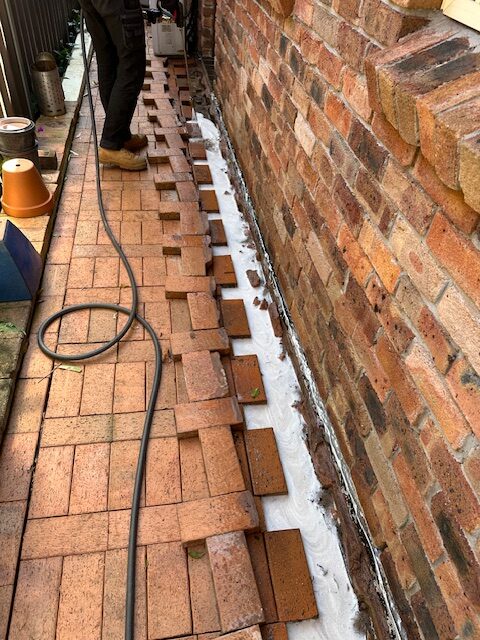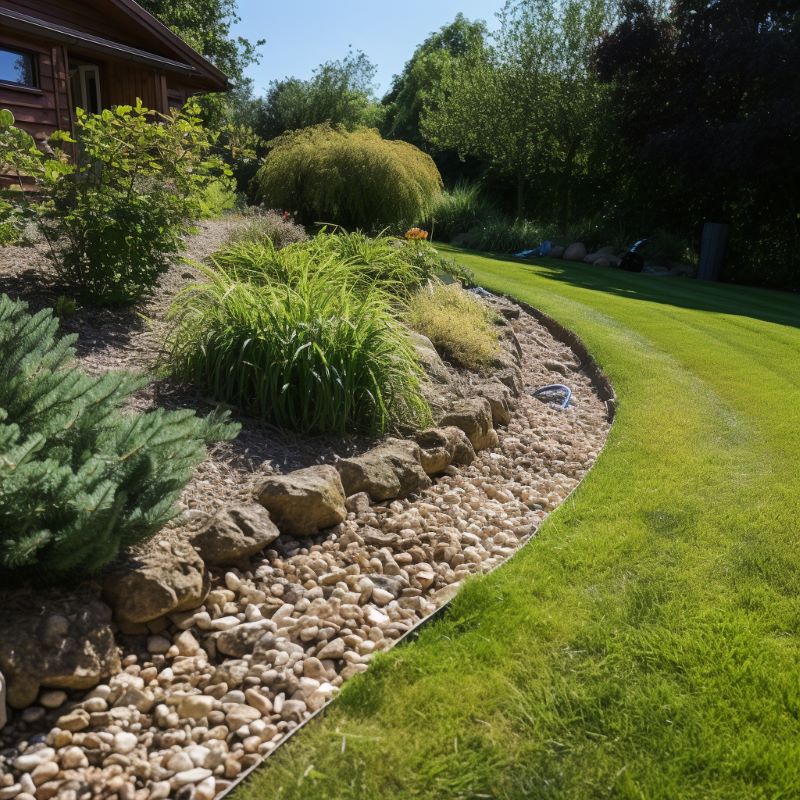Landscaping plays a crucial role in enhancing both the aesthetic value and market appeal of your home. However, without meticulous planning and thoughtful execution, landscaping efforts can inadvertently interfere with the integrity of your termite barriers. These protective systems are essential for defending your property against harmful termite infestations, which can lead to significant structural damage. Certain landscaping practices and maintenance routines may disrupt these barriers, reducing their effectiveness and exposing your home to risks. This detailed guide is designed to provide you with the essential information needed to make landscaping choices that protect against termites while preserving the functionality of your protective barriers.
Discover the Importance of Termite Barriers for Home Safety
Termite barriers are specialized protective systems—either physical or chemical—installed around or beneath your home to prevent termite infiltration. Every residence should have a dependable termite management system in place, making it essential to understand the type of barrier used in your property. One of the easiest ways to verify this is by checking your electrical meter box, where you can usually find relevant details about your termite protection. These barriers are critical for safeguarding structures, particularly in regions like Sydney’s Hills District, where termite activity is notably high, posing a serious threat to homeowners. Understanding how these barriers function helps ensure that your property remains safe from costly termite damage.
- Physical Barriers: Typically constructed from durable materials such as stainless steel mesh or graded stones, these barriers are installed beneath a building to effectively block termites from tunneling through and gaining access to your home.
- Chemical Barriers: These consist of liquid termiticides applied to the soil surrounding a structure, creating a treated zone that deters or eliminates termites from entering, thereby enhancing the protective measures in place.

Recognize Landscaping Practices That Endanger Your Termite Barriers
Many commonplace landscaping practices can unintentionally damage or undermine the effectiveness of your termite barriers, thereby increasing the risk of infestations. Awareness of these practices allows you to make informed decisions that will help safeguard your property against potential threats.
1. Planting Too Close to Your Home’s Foundation
When plants, shrubs, or trees are situated too near your house, they can create a variety of complications that jeopardize your termite defenses:
- Roots can penetrate physical barriers or disturb the treated soil in chemical barriers, ultimately diminishing their protective capabilities.
- Thick vegetation can retain excess moisture near the foundation, which is a significant attractant for termites, thus heightening the risk of an infestation.
2. Adding Soil or Mulch Near the Foundation
Introducing additional soil or mulch close to your property’s foundation can create a bridge over chemical barriers, allowing termites to bypass the protective measures in place. Organic mulch, in particular, can provide both a food source and habitat for termites, making it a highly attractive option for these pests, thereby increasing the likelihood of an infestation.
3. Hardscaping and Paving Projects
The installation of paving stones, patios, or retaining walls near your property can disrupt existing termite barriers. The soil movement during these construction projects may compromise the chemical seal or create gaps in physical barriers, resulting in vulnerabilities that termites could exploit, leading to potential infestations.
4. Considerations for Irrigation Systems
Poorly designed irrigation systems or excessive watering can saturate the soil around your home’s foundation. This not only dilutes the effectiveness of any termiticides in chemical barriers but also creates a conducive environment for termite colonies, allowing them to thrive and potentially invade your home.

Implement Landscaping Strategies to Protect Your Termite Barriers
1. Ensure Adequate Clearance from Your Home
- It is advisable to maintain a distance of at least 50 cm between plants and trees and your home’s foundation, ensuring an effective barrier against termite access.
- Consider selecting smaller, non-invasive plant species that are less likely to develop extensive root systems capable of interfering with your termite barriers, thus enhancing the protective measures around your home.
2. Choose Termite-Resistant Mulch Options
- Opt for inorganic mulches such as gravel or stone, or consider utilizing termite-resistant materials like cedar or cypress to significantly minimize risks associated with termite attraction.
- Limit mulch piles to a maximum height of 5 cm, ensuring they are maintained at least 15 cm away from the foundation to effectively reduce moisture retention that could attract termites.
3. Avoid Disturbing Barriers During Landscaping Activities
- Before digging or installing landscaping features near your home, it is crucial to consult with a professional to avoid disturbing the integrity of the termite barriers or any termite baiting systems, thus ensuring continued protection.
- In case of soil alterations, it is advisable to have the barrier reinspected and potentially retreated to ensure ongoing protection against termite invasion and to maintain the effectiveness of your defenses.
4. Thoughtful Landscape Design Considerations
- Strategically position irrigation systems away from the foundation to prevent moisture accumulation that could compromise the barrier and create a favorable environment for termites.
- Install root barriers for larger trees to prevent roots from encroaching on the termite barrier and causing potential damage, thus enhancing your property’s defenses.
- Be cautious of termite reticulation pipes to avoid damaging them during landscaping activities, which could jeopardize your property’s defenses against infestations.
Urgent Steps to Take if Your Termite Barrier Is Compromised
If your landscaping efforts or natural occurrences have disrupted your termite barrier, swift action is essential to prevent potential infestations:
- Schedule a Professional Inspection: A comprehensive termite inspection will help identify any vulnerabilities and confirm whether termites have breached your protective barrier, enabling you to take timely action.
- Reinforce Your Barrier: Based on the inspection findings, physical barriers may need repairs, while chemical barriers might require retreatment or a top-up to restore their effectiveness against termites and ensure your home remains protected.
- Implement Regular Monitoring: Routine inspections for termite activity are essential to ensure that your barrier remains intact and your property continues to be safeguarded from potential infestations.
Innovative Landscaping Solutions to Enhance Your Termite Protection
With thoughtful planning and strategic design, your landscaping can effectively complement your termite protection efforts, creating a harmonious balance between beauty and safety:
- Incorporate gravel paths or decorative stones along the foundation to establish a dry zone that deters termites from approaching, thereby enhancing your property’s defenses.
- Utilize raised garden beds with adequate clearance from the house to minimize moisture retention near the foundation, further reducing the risk of termite attraction.
- Regularly trim vegetation to ensure proper ventilation and reduce moisture buildup, creating an inhospitable environment for termites and protecting your home.

Landscaping can be designed to enhance, rather than undermine, your termite barriers. By gaining a comprehensive understanding of how various yard designs impact termite protection, you can create a visually appealing and pest-free home environment. For expert termite advice or assistance with maintaining your barriers, reach out to our experienced team today. Let us work together to secure your home while you create the landscape of your dreams.
The Article: Termite Barriers for Effective Landscaping Solutions first appeared on https://writebuff.com.




Your discussion on the intersection of landscaping and termite barriers really sheds light on an often overlooked aspect of home maintenance. It’s fascinating how what we think enhances the beauty of our homes can sometimes undermine their structural integrity.
I appreciate your take on this. It’s interesting how landscaping can really change the look of a home, yet those very choices can set the stage for termite issues down the line. I think a lot of homeowners don’t realize that the beauty of their yard can sometimes mask potential problems lurking below the surface.
You make a really good point about the duality of landscaping. It can certainly enhance curb appeal, but it often comes with hidden challenges, like termite issues. I think many homeowners tend to focus so much on aesthetics that they might overlook the practical aspects of yard design, such as drainage and the types of plants they choose. For instance, certain mulches and wood features can provide a perfect habitat for termites if they’re too close to the foundation.
You’ve really hit on an important aspect of landscaping that often gets lost in the shuffle. It’s so easy for homeowners to get swept up in the visual appeal of a yard, but neglecting the practical side can lead to larger problems down the line, like those pesky termites.
You’ve really hit on an important aspect of landscaping that often gets lost in the shuffle. It’s so easy for homeowners to get swept up in the visual appeal of a yard, but neglecting the practical side can lead to larger problems down the line, like those pesky termites. I’ve seen it happen with friends who prioritized aesthetic features without considering the long-term maintenance and potential risks.
You’ve raised an important point about the often overlooked balance between aesthetics and practicality in landscaping. It’s all too common to see homeowners caught up in the allure of decorative features, while the underlying landscape challenges are ignored. Take termites, for example; these pests can wreak havoc if proper precautions aren’t taken. A beautiful, inviting yard can quickly turn into a nightmare when structural integrity is compromised.
You’ve touched on such an important aspect of landscaping that often gets overlooked! It’s easy to get caught up in the beauty of flowers and the allure of pristine lawns, but the underlying practicalities really can’t be ignored. Your point about termites is spot on. Many homeowners just want a picture-perfect yard, and they may overlook the fact that certain materials can indeed create unintended havens for pests.
You’re right to highlight the balance between aesthetics and functionality in landscaping. While a beautiful garden can be incredibly inviting, it’s crucial to consider how various materials and designs might impact the overall health of the outdoor environment.
You’ve touched on such an important aspect of landscaping that often gets overlooked. It really does feel like there is this constant balancing act between aesthetics and practicality. I often find myself wondering how much we prioritize the ‘wow’ factor at the expense of sustainability and long-term maintenance.
You’ve hit the nail on the head with the landscaping conundrum. It’s all fun and games designing the perfect flower bed until you realize you’ve unknowingly created a five-star buffet for termites. It’s like throwing a party and forgetting to tell the uninvited guests to stay out. Trust me, nothing says “welcome home” quite like a swarm of termites setting up shop next to your prized hydrangeas.
You make such an interesting point about the landscaping struggle. It’s so true—what we envision as an idyllic outdoor space can quickly turn into a nightmare with those little critters setting up a buffet. I once went all out with an elaborate rose garden, only to discover that the new mulch I added was a welcome mat for every pest in the neighborhood. It definitely makes you reconsider how we approach gardening as a whole.
It’s fascinating how our dreams of creating a perfect garden can sometimes lead to unexpected challenges, isn’t it? That experience with your rose garden and the mulch is all too relatable. It’s like you put in all this effort to cultivate beauty, and then the pests throw a mini party right in the middle of it.
You raise such an important point about the balance between aesthetics and practicality in landscaping. It’s easy to get caught up in the beauty of a well-designed yard, but I think that deeper awareness of how our choices affect the environment and our homes is often overlooked.
You’ve touched on something that resonates deeply with many of us who care about our outdoor spaces. When we think of landscaping, it’s all too common to focus purely on what looks good at first glance. But digging a little deeper really shines a light on how those choices ripple through our lives and the broader environment.
You make a really interesting point about how landscaping choices can sometimes clash with maintaining our homes’ structural integrity. It’s easy to get caught up in creating that picturesque yard—lush gardens, elegant pathways—while overlooking the practicality of what’s happening beneath the surface.
It’s interesting you mention how landscaping choices can sometimes compromise structural integrity. Many homeowners might not think about how certain plants or landscaping features interact with the foundation of their home. For instance, we often envision that lush garden as a good design choice, but then there’s that creeping vine or those tree roots that can end up doing serious damage over time.
You raise an important point about the interplay between landscaping and the structural integrity of a home. It’s fascinating how the very elements that bring beauty and life to our gardens can also be hidden culprits when it comes to long-term damage. I’ve seen a few cases where homeowners were astounded to find out that those charming ivy-covered walls might be slowly rotting underneath.
You’ve touched on a really important point that often gets overlooked in the excitement of landscaping. Many homeowners do envision that lush garden as an ideal space, but it’s easy to forget how certain plants can interact with the infrastructure of our homes.
You’ve hit on something really crucial. It’s true that landscaping can be a double-edged sword. While we want our yards to be inviting and beautiful, sometimes the choices we make can create hidden risks.
I completely agree that the relationship between landscaping and termite barriers really is an overlooked aspect of home maintenance. It’s interesting how landscaping can transform a house into a beautiful oasis, and yet, if we’re not cautious, those same plants and features can create hidden vulnerabilities. I’ve seen some homes where beautifully placed flower beds were so close to the foundation that they created a perfect environment for termites to thrive—moisture and shade are like a welcome mat for those pests.
You’ve touched on a really crucial point here. It’s fascinating how landscaping can elevate the appeal of a home, yet, when it comes to pest control, it can backfire if we’re not paying attention. You’re right about those flower beds hugging the foundation—the moisture from watering and the shade they provide can create an inviting little haven for termites.
This is such an important topic that often gets overlooked! I remember when we were landscaping our yard; I was so focused on aesthetics that I didn’t even think about our termite barriers. It wasn’t until a friend who works in pest control mentioned it that I realized how easily landscaping can disrupt those protective systems.
It’s interesting you mention that! A lot of people get wrapped up in creating their dream yard without realizing how crucial those termite barriers are. I remember a similar experience when we were redesigning our landscape; I was all about the flowers and pathways, and I didn’t even think about the potential risks lurking beneath the surface.
I can relate to that experience completely. It’s so easy to get caught up in the aesthetics of a garden, isn’t it? I remember focusing on selecting plants that would bloom beautifully throughout the seasons, but it wasn’t until a friend mentioned their termite issues that I realized how important it is to lay a solid foundation—literally.
It’s interesting how our focus can often be drawn to the visual appeal of a garden, sometimes overlooking the foundational aspects that are essential for its longevity. Your experience resonates with many gardeners who initially immerse themselves in the excitement of selecting vibrant blooms without considering the underlying factors that contribute to a healthy ecosystem.
It’s interesting how a friend’s observation can shift our perspective on gardening. The allure of vibrant blooms often draws us in, yet you’re right—focusing on the overall structure is crucial. A healthy foundation not only supports the visible beauty but also plays a significant role in the ecosystem of the garden.
You bring up a really important point about those termite barriers. It’s so easy to get lost in the beauty of flowers and intricate pathways when designing a yard, but the structural integrity of our homes is really what we need to prioritize. I had a similar experience during a landscaping project a few years ago; I was so focused on selecting the perfect plants and creating a cozy outdoor space that I overlooked some of the protective measures we could have taken.
It’s interesting how outside influences can shift our focus in projects like landscaping. Many people do zero in on the aesthetics—who doesn’t want a beautiful yard? But as you pointed out, it’s easy to overlook things like termite barriers, which play a crucial role in protecting our homes. Aesthetics and functionality shouldn’t be mutually exclusive.
You’re spot on about the balance between aesthetics and functionality in landscaping. It’s so easy to get swept up in making a yard look picture-perfect that we can forget those behind-the-scenes elements that really keep our homes safe and sound. Termite barriers are a prime example—without them, all that beautiful landscaping could become a buffet for pests.
You’ve raised a great point about the balance between aesthetics and functionality in landscaping. It’s so easy to get caught up in how a space looks, especially with the onslaught of beautiful garden photos on social media. I find that many people, myself included at times, often prioritize the visual appeal as a way of expressing personal taste or enhancing curb appeal. But like you mentioned, overlooking functional elements like termite barriers can lead to much bigger headaches down the line.
You nailed it! It’s so easy to get swept up in making everything look picture-perfect and forget about the hidden stuff that really keeps our homes safe. A beautiful yard is definitely something we all like to show off, but when the plants start to grow and flowers bloom, it’s those foundational elements that sneakily keep things in check—like those termite barriers you mentioned.
It’s so easy to get caught up in making our outdoor spaces look amazing and forget about the hidden elements that keep our homes safe. I can totally relate to that experience. Landscaping brings a lot of joy, but when we change things up, we can unintentionally create new pathways for pests.
You bring up a really critical point, and it’s something many of us don’t think about until it’s too late. When we’re in the thick of landscaping—planning out the perfect flower beds or choosing the right shrubs—it’s all too easy to focus solely on how beautiful our yards look. The way we design our outdoor spaces can actually have quite a significant impact on much more than aesthetics, especially when it comes to pests like termites.
I really appreciate how you’ve highlighted the importance of balancing landscaping with termite protection. It’s such a crucial aspect that many homeowners overlook! When I was planning my own outdoor space, I wanted to create a vibrant garden without compromising the integrity of my home’s defenses against termites. I learned the hard way that certain plants, especially those with extensive root systems, could potentially disrupt my termite barriers.
It’s great to hear about your experience balancing a beautiful garden with termite protection. Many people don’t realize how interconnected landscaping and pest management can be. It sounds like you really did your homework to protect your home.
It really is interesting how intertwined landscaping and pest management can be. I found that gardening became more enjoyable once I understood the importance of protecting my plants from pests, especially termites. I did some research into natural pest control methods, and it opened my eyes to the various ways we can create a healthy garden environment without relying solely on chemicals.
It’s great to hear about your experience planning your garden! Balancing the vibrancy of plants with termite protection can be a real challenge. Many homeowners don’t realize that some popular landscaping choices might interfere with termite management.
It sounds like you’ve had quite the experience navigating the delicate dance between landscaping and termite protection. It’s a topic that genuinely merits attention, especially since many of us get so caught up in our visions for a beautiful outdoor space that we sometimes forget the factors that can affect our homes from the ground up.
I never thought landscaping could be a double-edged sword! Here I was dreaming of a picturesque garden, complete with a gnome or two, only to realize I might be throwing my home’s defenses under the bus. It’s like planning a fabulous dinner party and accidentally serving a buffet of termite treats on the side.
You’ve nailed it! It’s funny how our dream gardens can come with unexpected baggage. Sure, a gnome or two can bring charm—who doesn’t love a quirky garden statue? But it’s so easy to overlook the little things that can lead to trouble, like inviting pests with that inviting mulch or overwatering and creating a perfect home for unwanted critters.
Landscaping really can be a tricky balance, can’t it? It’s amazing how we often prioritize aesthetics without fully considering the implications for our homes and ecosystems. That dream garden can turn into a surprising burden if we’re not careful. I once went all out planning a backyard setup with flowers and decorative features but didn’t think about the upkeep or how those plants might attract unwelcome guests like pests.
You’ve hit on a crucial aspect of landscaping that often gets overlooked. Designing a beautiful garden is undeniably rewarding, but many people find themselves overwhelmed by maintenance down the line. It’s easy to get swept up in the aesthetics and forget about the practical side—like plant care and possible pest attraction—until you’re staring at a jungle that needs constant attention.
You bring up such a relevant point about the balance we try to strike in landscaping. It can be easy to get swept away by the vision of a stunning garden and forget about what it actually takes to maintain it. I think many of us have been there—eager to create that perfect outdoor space, only to find ourselves overwhelmed by maintenance or uninvited guests.
You bring up such a relevant point about the balance we try to strike in landscaping. It’s so easy to get caught up in the aesthetic side of things—after all, a beautiful garden can be such a source of joy and relaxation. But when the reality of maintenance hits, it can feel like a burden. I think I’ve learned to appreciate gardens that strike a balance between beauty and low maintenance. For instance, I’ve started incorporating native plants that are well-adapted to my area’s climate. They often require less water and care, and it’s such a bonus to see local wildlife thriving because of those choices.
You hit on a crucial aspect of landscaping that many overlook. It’s great to hear you’re leaning towards native plants. They really do make a significant difference, not just in terms of maintenance but in supporting local ecosystems, too. It’s fascinating how well these species have adapted over time—they thrive with minimal input while providing habitat for birds and beneficial insects.
It’s great to hear your thoughts on balancing aesthetics and maintenance in landscaping. You’re spot on about the joy that a beautiful garden can bring, but it’s so easy to overlook the commitment that goes along with it. It sounds like you’ve found a wonderful middle ground by incorporating native plants. That really makes a difference, doesn’t it?
You’ve hit the nail on the head with that dinner party analogy—it’s all fun and games until the termites RSVP and decide they like your stylish new garden décor more than you do. It’s a tricky terrain out there in the world of landscaping. The more you try to create that perfect oasis, the more it sometimes feels like you’re setting a buffet for all manner of pests.
You’ve captured that feeling perfectly—landscaping really can feel like hosting a party where you’re just waiting for the uninvited guests to show up. I’ve had my own share of battles with pests over the years. For a while, I was convinced I could create this idyllic backyard retreat, only to find that my carefully chosen plants were like a neon sign for every critter in the neighborhood. It’s almost ironic how our attempts to beautify our spaces can sometimes turn into attracting the very things we want to keep away.
You’ve really hit on something central to the gardening experience. It’s a delicate balance, right? We’re excited to cultivate beauty and create a slice of paradise in our outdoor spaces, only to find ourselves seemingly hosting a buffet for every pest in the area. That irony can be frustrating, especially when you’ve invested so much time and energy into your landscape design.
You’ve touched on such a relatable experience—it’s almost comical how our gardens can turn into a battleground, isn’t it? The vision we have in our minds of a serene oasis often goes awry when uninvited guests come crashing in. It’s like planning a perfect dinner party and then realizing the main course has attracted the attention of, say, the neighborhood raccoons or a squad of relentless aphids.
You hit the nail on the head with the battleground analogy. It’s wild how the peaceful sanctuary we envision can easily turn chaotic thanks to our garden’s unexpected visitors. I guess it’s a reminder that nature doesn’t always stick to our plans, right?
You’re hitting on something that a lot of people don’t consider when they dive into landscaping. Those dreamy gardens can easily turn into a setup for unwanted pests if we’re not paying attention. It’s kind of a balancing act, right? You want that beautiful space to unwind in, but you also need to keep an eye on what’s creeping around in the soil or those bushes.
You’re spot on about the balancing act that comes with creating a stunning garden space. It’s so easy to get lost in the vision of blooming flowers and lush greenery, but the reality of managing pests is a crucial part of the process. A beautiful garden can sometimes attract more than just our favorite butterflies.
You’re so right about that balancing act. I’ve definitely fallen into the trap of focusing solely on the aesthetics of my garden without considering the more practical aspects, like pest management. It’s fascinating how a thriving garden can turn into a mini ecosystem. I’ve had my share of unwanted visitors, from aphids to those pesky cucumber beetles.
It’s ironic, isn’t it? You set out to create a little slice of paradise and suddenly realize you might be luring in a cast of unwanted critters instead of welcoming in the neighborhood gnomes. It’s like you’re hosting a dinner party for the neighborhood’s finest and unwittingly putting out a spread that reads like a “what not to do” guide for home protection.
You’ve captured the essence of the situation perfectly—it really does feel like a bit of an unexpected twist in the garden saga. When we set out to create that little slice of paradise, we envision blossoming flowers and cheerful gnomes, not the unintended guests that sometimes show up uninvited.